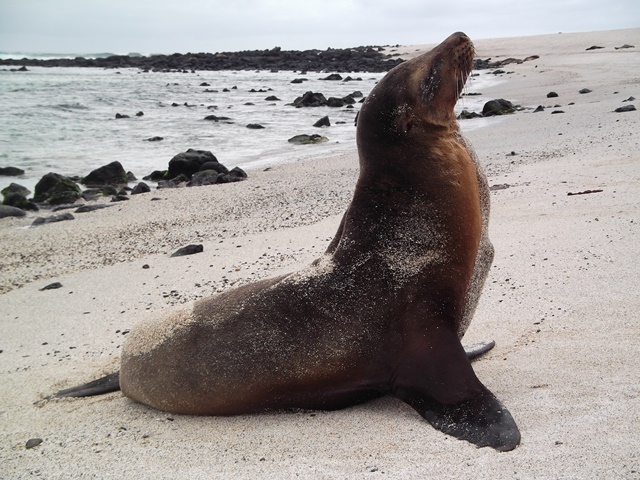
Photo © Ben Westwood.
The Galápagos Islands are the best places in the world to get close to wildlife. Because the islands have hardly any natural predators, the creatures have traded fear for friendliness—from blue-footed boobies who peer at you as you pass so close you could pat them on the head, to sea lion pups playing peekaboo with snorkelers. The Galápagos give a glimpse of what the world must have been like at the dawn of time. Reptiles (such as giant tortoises and iguanas) rule the land, and a magnificent array of fish, rays, sharks, sea lions, turtles, and penguins present a natural spectacle underwater. The rugged volcanic landscapes—blackened lava trails and smoldering craters —make the geology as fascinating as the wildlife. The Galápagos remind us of both the power and playfulness of nature. There is an ongoing struggle in the South American jungle, with ecologists and indigenous tribes on one side and corporate interests on the other.I have also been lucky enough to visit the Amazon jungle in Ecuador several times. Nowhere is the importance of tourism more apparent than in this unique environment. Waking to a dawn chorus of thousands of insects and birds, gazing over the endless forest canopy from an observation tower, and hiking through primary jungle were all reminders of how insignificant a person is in the face of the jungle’s sweeping grandeur. A whole host of creatures were on view—preening parakeets, mischievous monkeys, creepy caimans, scary spiders. But the experience of seeing such natural wonders was chastened by the all-too-visible activities of oil companies in the rainforest, their trucks shuttling across rivers, dwarfing the tiny tourist boats. There is an ongoing struggle in the South American jungle, with ecologists and indigenous tribes on one side and corporate interests on the other. Fortunately, tourists can play their part in helping to protect one of the last wildernesses on Earth, and seeing it for myself helped me to understand that going on vacation is so much more than just relaxation time—it allows us to seek out what is special in the world and recognize what must be preserved.